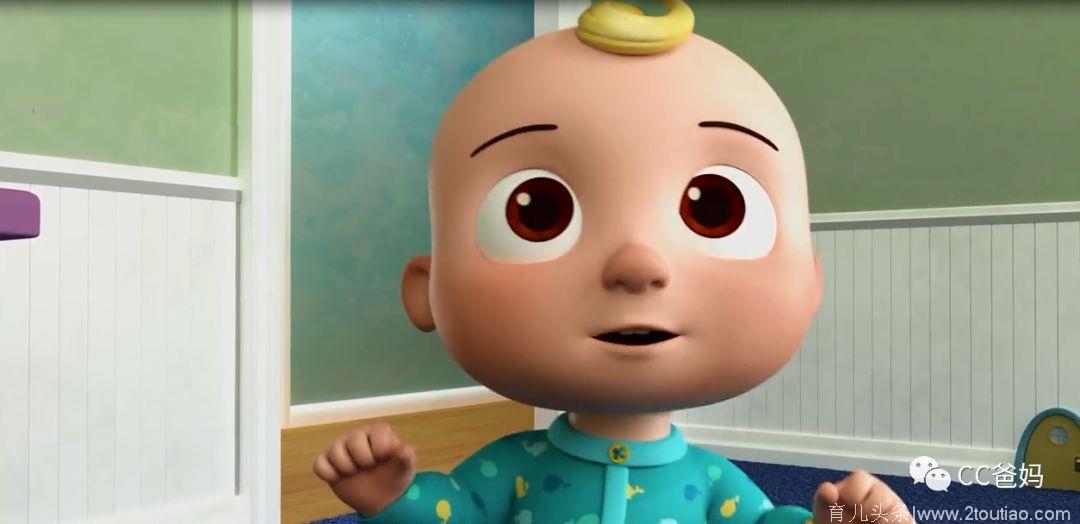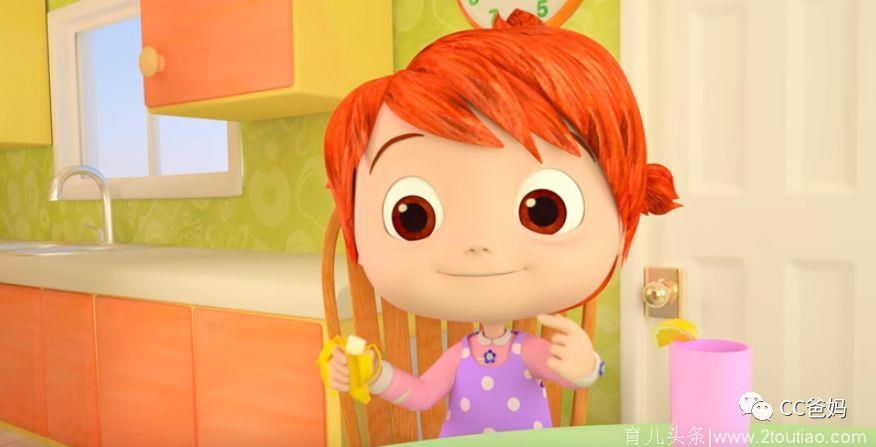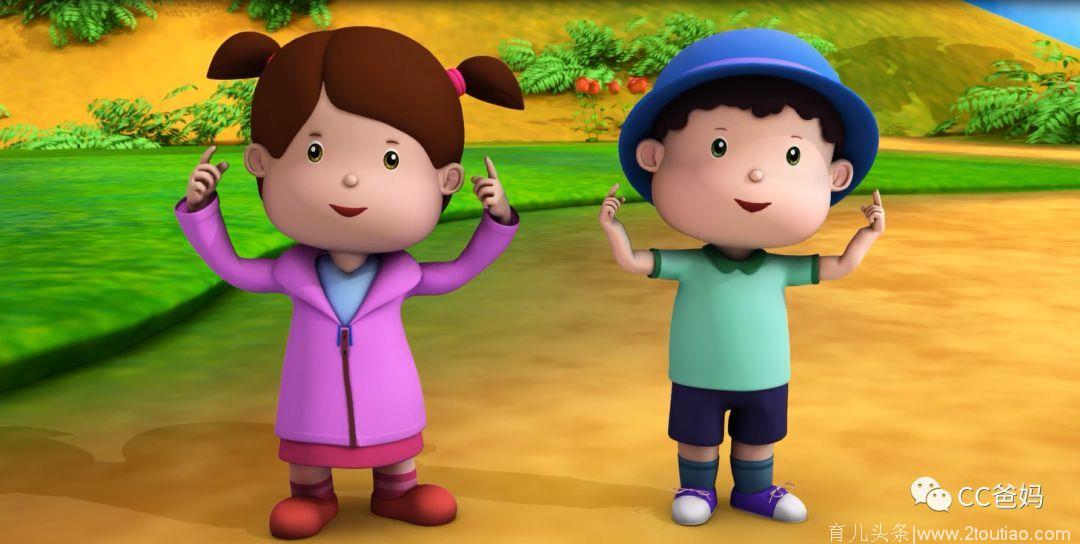文/CC爸妈
在宝宝成长的日子里,在一点点长大中,他们会开始对自己的身体产生兴趣。宝妈们经常会从小小游戏中教宝宝认识奇妙身体,让宝宝的认知发育提高。
但是只靠些日常的小游戏是不能完全带动宝宝的兴趣的。
我亲眼见过有妈妈正襟危坐的教7、8个月大的宝宝,“眼睛,来,跟妈妈说,眼睛。”
娃,自然是不知所云的。
所有的早教课中非常重要的一环,都是儿歌,家长带着宝宝跟老师一起唱唱跳跳。
但这个目的,绝不仅仅是学会几首歌那么简单哦。
边唱边跟着做动作,其实就是在锻炼孩子的专注力和自我控制能力,寓教于乐、潜移默化,才是早教的真谛。
我从没拿着CC的手“教”过她这是大拇指,这是食指,这是中指。
CC认识自己的五根手指,大都是根据手指歌谣和儿歌潜移默化学来的。
基于上周我们推出的英文儿歌早教得到的一片好评,所以我打算这期给大家推荐一些关于宝宝身体认知的英文儿歌,比如教宝宝认识自己的小手、小脚丫、五官等等。
其实我们应该了解到,小宝宝对这个世界的探索,从他们出生那一刻就开始了。
在生命开初的几个月,婴儿探索最多的,是自己的身体。

因为对于一个新生儿来说,自己身体的一切感觉和反应都是前所未有、新鲜未知的。
从呼吸、吸吮、吞咽、咳嗽、打喷嚏,到饥饿、困倦,乃至大小便。
许许多多我们成年人习以为常、难以觉察的感觉,对小婴儿来说都是刻骨铭心的经历。
这种对身体的探索,会贯穿整个身体发育阶段。
那么教宝宝认识自己的身体结构应该听哪些有意思的儿歌呢?
各位宝妈们赶快拿出小本本往下看。
今天的儿歌主题是“身体认知”,分为三首,分别是:
1、手指:Finger family
2、头、肩膀、膝盖、脚趾:Head shoulders knees toes
3、眼睛、鼻子、耳朵、嘴巴、手:Five senses song
从手指到五官到全身都有啦!
1
Finger Family
我觉得小宝宝的小手是最可爱的,肉嘟嘟的、白嫩嫩的。
但再好看咱们也不能天天让孩子只会啃手玩啊,除了吃手,也得学习学习小手指的知识呢。
这首儿歌用生动活泼的形式阐释丰富的手指知识,为孩子们揭开身体的奥秘。
所涉内容还包括家庭成员,这样的英文儿歌对孩子的认知成长是十分有用的。

歌曲内容充实有趣,科学性强,动画生动活泼,想象力丰富,让孩子在故事的情境中和形象亲切可爱的小主人公们一起唱歌、一起学习。
麻麻可以看着歌词带着宝宝跟唱哦。
英文歌词:
Daddy finger, daddy finger, where are you?
Here I am, here I am. how do you do?
Daddy finger, daddy finger, what do you do?
Play guitar, play guitar, that’s what I do.
Mommy finger, mommy finger, where are you?
Here I am, here I am. how do you do?
Mommy finger, mommy finger, what do you do?
Exercise, exercise, that’s what I do.
Brother finger, brother finger, where are you?
Here I am, here I am. how do you do?
Brother finger, brother finger, what do you do?
Building things, building things, that’s what I do.
Sister finger, sister finger, where are you?
Here I am, here I am. how do you do?
Sister finger, sister finger, what do you do?
Draw the paint, draw the paint, that’s what I do.
Baby finger, baby finger, where are you?
Here I am, here I am. how do you do?
Baby finger, baby finger, what do you do?
Play with firends, play with firends, that’s what I do.
这首歌,我选了一个内容最全的视频,简单版是只有这两个句式:
Daddy finger, daddy finger, where are you?
Here I am, here I am. how do you do?
没有下面这两个句式:
Daddy finger, daddy finger, what do you do?
Play guitar, play guitar, that’s what I do.
大家可以根据宝宝的年纪选择跟唱难度。
关键词:
Daddy (爸爸)
Mommy (妈妈)
Brother (哥哥/弟弟)
Sister (姐姐/妹妹)
Baby (宝贝)
Finger (手指)
拓展关键词:
guitar (吉他)
exercise (运动/做运动)
build (建造...)
draw (画...)
关键短语:
where are you? (你在哪?)
Here I am. (我在这)
what do you do? (你在干嘛)
2
Five senses song
这首歌的切入点是五个感官,对应的相应器官。
可以告诉宝宝我们有两只大眼睛,所以能看见蓝天白云;还有一个鼻子可以闻得到花香。
那么十根手指可以用来干什么呢?他们能摸,摸到小玩具。

小嘴巴可以吃到好吃的食物,那耳朵呢?就用小耳朵听听这首歌吧。
看着歌词唱才更有感觉啊。
英文歌词:
When I use my eyes, eyes, eyes,
I can see thesunshine.
When I use my eyes, eyes, eyes,
I can see the sunshine.
When I use my eyes, eyes, eyes,
I cansee theblue sky.
When I use my eyes, eyes, eyes,
I can see the blue sky.
When I use myears, ears, ears,
I can hear the birdies.
When I use my ears, ears, ears,
I can hear the birdies.
When I use my ears, ears, ears,
I canhear thewindchimes.
When I use my ears, ears, ears,
I can hear the windchimes.
When I use my nose, nose, nose,
I can smell theflowers.
When I use my nose, nose, nose,
I can smell the flowers.
When I use my nose, nose, nose,
I can smell themuffins.
When I use my nose, nose, nose,
I can smell the muffins.
When I use my mouth, mouth, mouth,
I can taste bananas.
When I use my mouth, mouth, mouth,
I can taste bananas.
When I use my mouth, mouth, mouth,
I can taste the lemon.
When I use my mouth, mouth, mouth,
I can taste the lemon.
When I use myhands, hands, hands,
I cantouch my teddy.
When I use my hands, hands, hands,
I can touch my teddy.
When I use my hands, hands, hands,
I can touch the bubbles.
When I use my hands, hands, hands,
I can touch the bubbles.
关键词:
eye (眼睛)
ear (耳朵)
nose (鼻子)
mouth (嘴巴)
hand (手)
拓展关键词:
see (看)
hear (听)
smell (闻)
taste (尝)
touch (触摸)
3
Head shoulders knees toes
让我们听听这首我们小时候就会唱的身体部位歌。
头、肩膀、膝盖和脚趾,眼睛、耳朵、嘴巴和鼻子。
根本不需要指着某个部位去教,学会这首歌,这些就全搞定啦!

跟着视频里的小宝宝一起再来学习一遍身体部位吧,还可以跟着跳跳舞。
歌词是不是很熟悉啊,朗朗上口,又好记。可以多重复几遍哦,让宝宝加深记忆。
英文歌词:
Head shoulders knees and toes, knees and toes.
Head shoulders knees and toes, knees and toes.
And eyes and ears and mouth and nose.
Head shoulders knees and toes, knees and toes.
Head shoulders knees and toes, knees and toes.
Head shoulders knees and toes, knees and toes.
And eyes and ears and mouth and nose.
Head shoulders knees and toes, knees and toes.
Head shoulders knees and toes, knees and toes.
Head shoulders knees and toes, knees and toes.
And eyes and ears and mouth and nose.
Head shoulders knees and toes, knees and toes.
关键词:
head (头)
shoulder (肩膀)
knee (膝盖)
toe (脚趾)
往期课程链接:
上期有妈妈问,什么时候给宝宝听英文儿歌最好呢?
播放英文儿歌不同于亲子阅读,不必要非得有一个固定的时间。
有时候,越是在孩子自然、放松的状态下播放,越能引起意想不到的效果哦。
每天可以见缝插针的播放。
- 早上起床、穿衣服、洗漱时,用1-2首儿歌循环,叫醒耳朵;
- 吃午饭时,随机播放一首曲子,根据播放的次数,约定吃饭需花费的时间;
- 白天出门在车上,播两首旋律轻快的儿歌童谣,孩子还能跟着轻声哼唱;
- 晚上洗澡时,边听儿歌边洗澡也是非常难得的亲子时光。
总而言之,播放儿歌不建议固定时间、一本正经、正襟危坐,而应该不经意间作为孩子生活中的背景音乐播出,潜移默化的,孩子反而深受影响哦。
CC爸妈:“中国父母学习计划”推行者,C爸-中国医科大学硕士;C妈-报社育儿编辑,新时代、新父母、新理念,育儿需要鸡汤,也需要指南,公益普及婴幼儿养育、疾病、心理知识。原创公众号:CC爸妈(cc-bama)



-lu.png)


-pr.jpg)